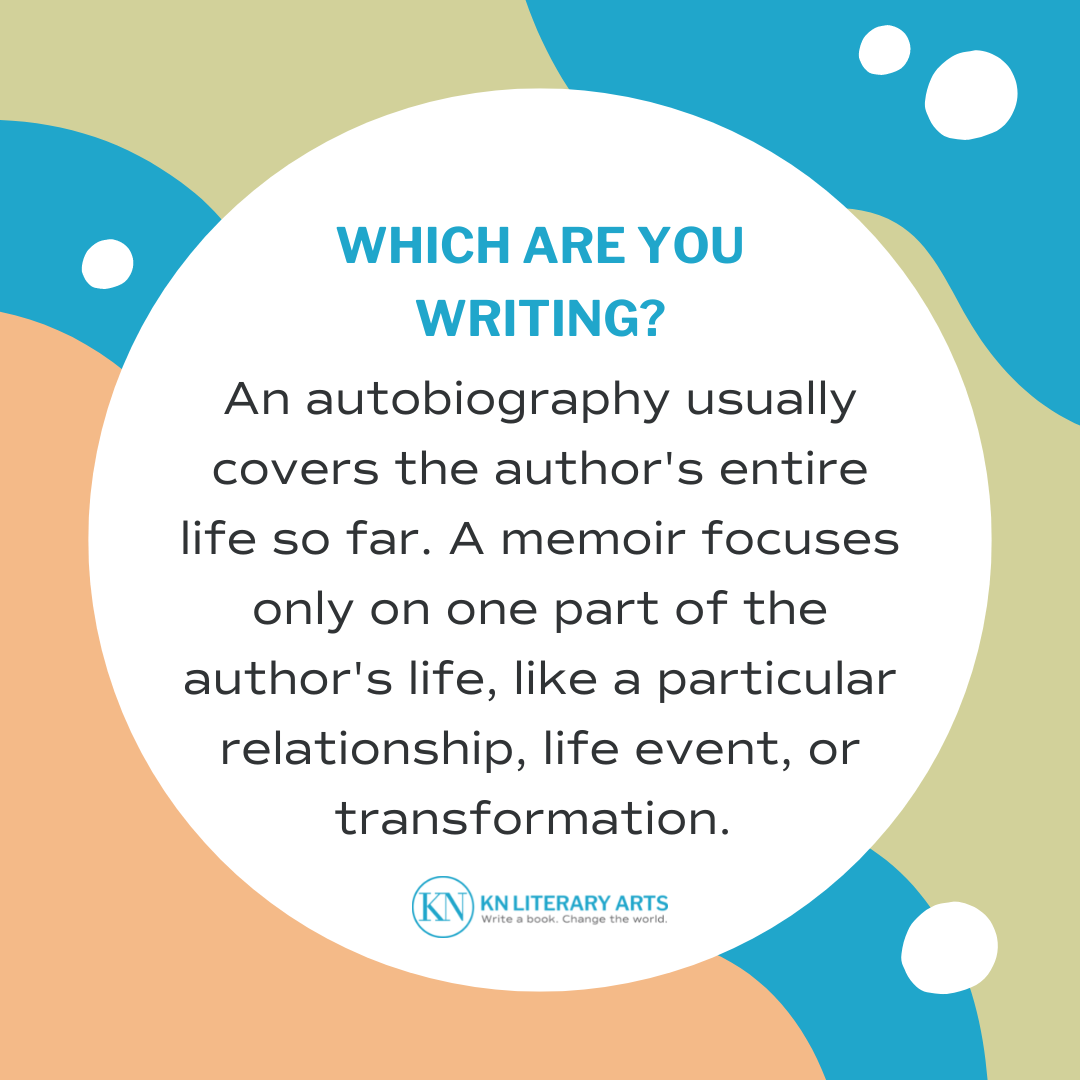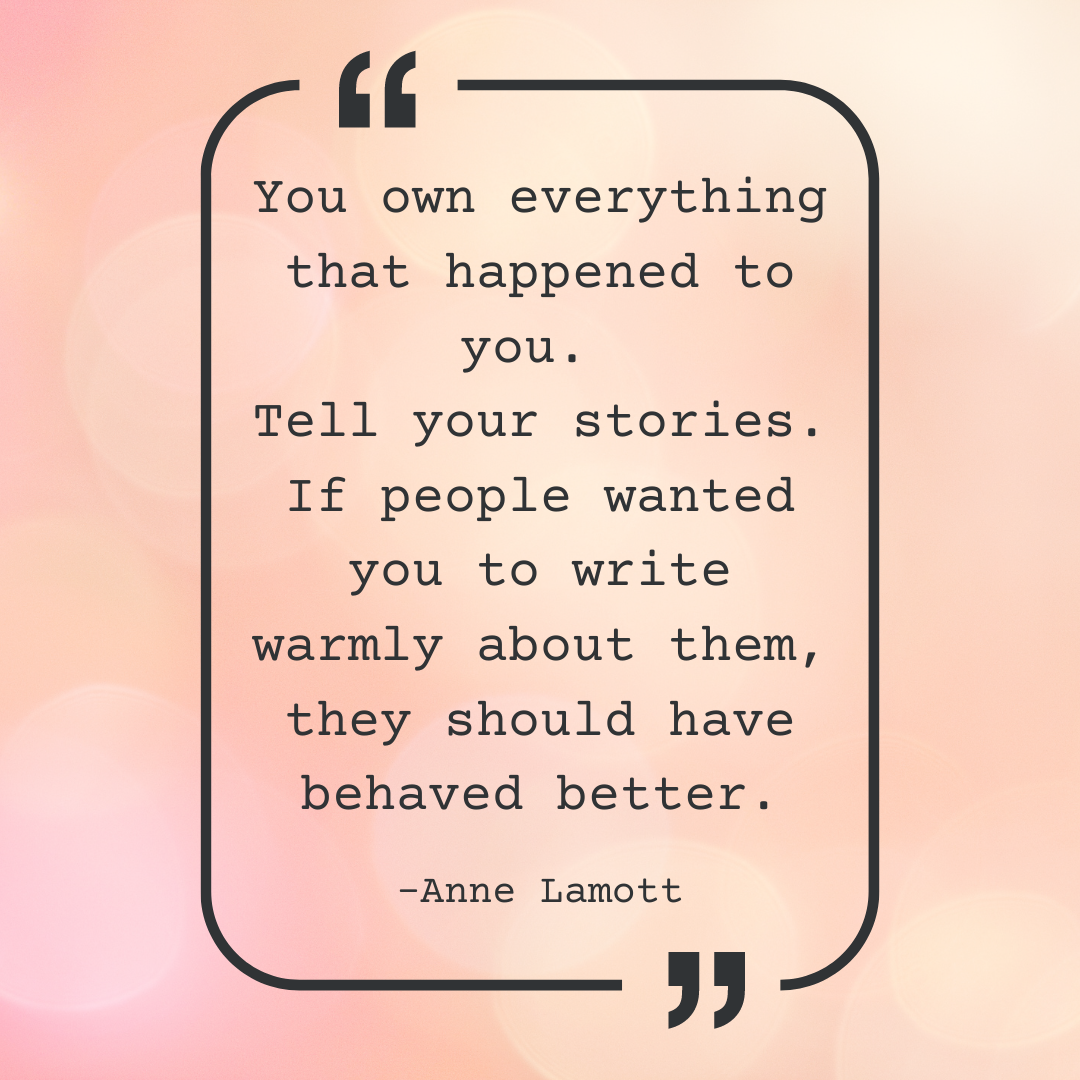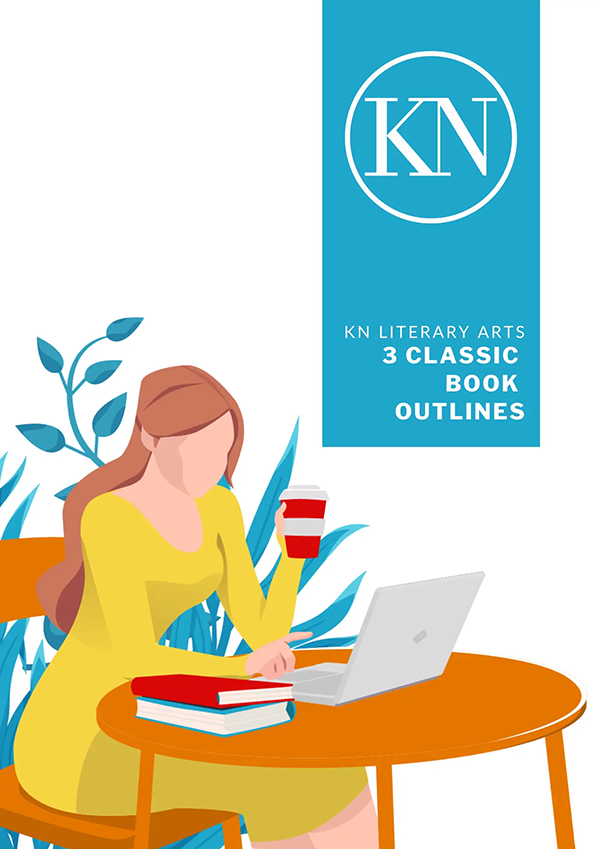Table of Contents
What Types of Memoirs Are There?
How to Choose a Theme for Your Memoir
How to Create a Memoir Outline
Introduction
Today I’m talking about a captivating, life-changing, beautiful story. Yours.
It’s a story about the most meaningful parts of your life. The people you’ve met along the way, who each gave you something extraordinary. The life lessons you could only learn through experience. A tale of love and loss, time and place, luck and opportunity.
It’s a story only you can tell. And yes, you should tell it.
A well-written memoir can have blockbuster-worthy plot lines, yet it’s so much more than a paperback by the pool. Real-life experience—life, family, trauma, loss, love—are powerful and profound when shared firsthand with others.
The art of storytelling has been a proven tool throughout human history, one that can be just as powerful for the storyteller as it is for all who listen. It’s practically hard-coded in our DNA.
You’re reading this article, which means there is a fairly good chance you have a personal story that aches to be released. Your first step in writing a memoir is to understand and own your motivations for doing so. If financial gain is at the top of your list, I’d encourage you to discover a stronger driving force. Money is a mercurial muse. Even if you don’t make a dime, writing your memoir could be a deeply rewarding experience—one that may rival the actual story itself. (More on this in a bit.)
Writing your memoir will also be a process, and—if I’m honest—a sometimes painful one. After over 20 years of working with authors, I’ve walked through memoir-writing with the most well-intentioned writers. I’ve witnessed them flying through a manuscript, alight with memory. I’ve watched them take themselves by surprise as writing their story reveals new insight into who they really are and who they’ve become.
I’ve also seen them run headlong into writer’s block as they struggle with too many words, feelings, and outside opinions. I’ve seen them come up empty at the end of their stories because they’ve chased the wrong plotline. I’ve seen them get in their own way, rush the process, and make unfortunate technical mistakes that erase their life’s work with a press of a button or a crash of a server.
And that’s why I’m writing this article. To walk you through the most critical steps of bringing your story to life, from figuring out where to start to finding someone to help you publish (those of you who are further along in this process are welcome to jump ahead).
What Types of Memoirs Are There?
After you settle into your true motivations, the next step is to get absolutely clear about what you want to achieve with your story.
Will it be a personal processing tool for you? Are you hoping to translate your experiences into words of wisdom for others? Are you looking to account for every single detail of your life? (That’s a whole other story—more on that below.)
The Teaching Memoir
Some life lessons leave a legacy. Whether it’s a cautionary tale or an invitation to live life to the fullest, a teaching memoir story weaves in wisdom while challenging and equipping readers to overcome their own obstacles. These books are a type of “practical nonfiction” and are some of my favorites. There is something special about empowering your readers to find answers, healing, and even peace—and knowing your life experiences will help them. It’s like you were born to do it.
The Personal Memoir
While some may argue that every story is a teaching experience, if your deepest desire is to focus on retelling your journey during a specific period, a sequence of events, or an overarching theme of your life, you’re writing a personal memoir. Personal memoirs are a powerful invitation to readers to join you on your adventure and experience your unique perspective. You’re simply (read: not always easily!) recounting your experiences as vibrantly as you lived them—to entertain your readers, to move and inspire them, and to honor the life you’ve had.
They may still learn something—but that lesson is theirs, not yours.
The Difference Between a Memoir and an Autobiography
Capturing every detail of your life from birth through the present might be your passion project—but that makes it an autobiography, not a memoir. An autobiography is a biographical summary of your entire life written by the only person with all the intimate details (psst…that’s you). While occasionally anecdotal, this long-spanning story is more fact and detail-driven, preserving your legacy for generations to come.
On the other hand, a memoir gives a snapshot in time and describes the transformative, meaningful, sometimes amusing experiences of your life—or a larger life theme that was supported by specific, aligned events.
Knowing the difference between an autobiography and a memoir is important at this stage—and can save you tons of time in the writing and editing process.

What Do the Best Memoirs Have in Common?
I believe all memoirs give us a gift in their own way—which is why I always recommend that aspiring memoir writers read a ton of them! The more you expose yourself to the nuances of personal narrative, the more you can sharpen your storytelling skills and bring your memoir to life.
You’ll find, as I say in the video below, that all great memoirs have a few important things in common—from the techniques used in the writing process to the writing “tricks” harnessed to engage the reader.
Are you ready to write your transformational story? Find out here.
Preparing to Write a Memoir
With your motivations and memoir type solidified, it’s time to get your writing tools together. More than just a notebook or a laptop, real writers (and yes, that’s you!) know there’s hard work ahead.
The better you prepare and train yourself for this process, the easier—and more satisfying!—it will be. In this section, I’ll show you how to remove common obstacles and build confidence in your writing.
Your Emotional Toolbox
- Make sure you are ready.
Of course, “ready” can mean different things to different writers, but the process to get there is often the same. Ask yourself several questions (these three are my favorite) to make sure you’ve equipped yourself for what will happen as you translate the story in your mind into an experience the world can read. Are you ready to be honest? Exposed? Criticized? Recognized?
Knowing where you stand is one thing. Keeping your feet on solid ground is another. Memoir writing is a story of its own. It often can’t be rushed, but it can be coaxed along. - Deepen your “Why”
If you skipped the intro to this article, you missed one of the most important parts of the memoir-writing experience—your motivations. Your “why” is what gives you a voice to all that you’ve experienced. It’s the driving force that breaks through writer’s block and the energy that keeps you at your laptop into the wee morning hours.
Perhaps you are journeying toward your own healing, and your memoir is a part of that process. Understanding how writing can help you heal—and help others find healing through your words—will give you firm footing as you put pen to paper.
Maybe you are writing your memoir to become a famous author. Perhaps you are a local celebrity looking to expand your reach. You’ll learn as my clients have that going from local to national sensation requires certain qualities that go beyond your story. Is your story born to be a bestseller? Are you ready to be known for it? - Move past common road bumps
As with anything worth doing, writing a memoir will come with challenges. From fears that go beyond the opinions and feelings of others to failing memories of exactly how it happened, every memoir writer experiences some of the same hurdles. The good news? There are ways around them. Here are 3 road bumps you’ll most likely encounter—and what to do when you hit them. - What will your mother think?
“Fear of mom” is a real thing. Hurting those we love by telling how they shaped (and even hurt) us is a reality—and often a (permanent) setback for many authors. You can work through this. If your motivations, heart, and goals are in the right place, your hesitation doesn’t have to halt your memoir momentum. Learn how to tell your story (even if your mom won’t like it).
Your Technical Toolbox
- Make a back-up
Nothing sucks the air out of a room like the desperate gasp of an author who lost a manuscript. The time spent pouring out your best deserves a failsafe—even (and especially) if you use a cloud service. This video will walk you through how to back up your manuscript with confidence. For my skimmers and “step-skippers” out there, don’t gloss over this one. Get your backup in place at the very beginning.
This goes for all of your research, pictures, videos, and prompts, too. - Scrivener
Scrivener is the go-to app for writers that takes you from rough draft to final copy. From cork boards and organization tools to the ability to work a section at a time or to view your entire masterpiece, Scrivener provides everything you need for a strong start and even stronger finish. (Find out what I love about Scrivener here.) - Recommended books
For those of you fact-finders who really like to research a project before you dive in, I get it. It’s overwhelming to write your life’s story, especially if you don’t feel like you understand all the moving parts. I’ve pulled together a list of five books to get you started. You don’t have to read all of them, but if you want more information on how to begin, I encourage you to pick one and crack it open as soon as possible.
30-Minute Writing Exercises
- Journaling
If you want to be really good at something, you have to work at it—and writing is an art that benefits from repeated attempts, prompts, and practice. These powerful journaling ideas will help you become more comfortable—and more effective—at bringing the deepest, darkest, or most meaningful parts of your story to light.
If you want to write a compelling memoir, you have to give yourself the gift and space of vulnerability. It’s in this precious space where honest “aha” moments happen and your inner narrative can open up. Journaling provides you a safe place to practice the words that best describe what you are truly trying to say. - 100 Moments Exercise
One of my favorite writing prompts, the 100 Moments Exercise, is a powerful way to gain insight into your life’s moments and plot twists. Download it here and get started—not just with the prompt, but with your entire memoir. (It’s that motivating!).
- Writing Your Life Story Exercise
In the video below, I walk you through one exercise I recommend to everyone thinking about writing their memoir. Note: This video is about 12 minutes long, but the exercise should take you about a half hour. I promise you won’t regret it. Selecting the scenes for your memoir is one of the most important elements of writing an effective story.
How to Choose a Theme for Your Memoir
A theme is a transformative thread that weaves your story together and what allows your readers to connect more deeply with your words and themselves. The stronger and clearer the theme, the more satisfying your memoir will be to write—and read.
As frustrating as it can be for the writer, these transformative themes don’t always make themselves known from the beginning. Sometimes we’re just too close to the details to see the big picture taking shape.
Get step-by-step tips on finding and choosing a theme.
Taking a step back—and a few steps above—the narrative process is a great way to catch a glimpse of your meaningful moments from a different perspective. You’ve already done this naturally as a part of your evolution and growth as a human—haven’t you seen commonalities, trends, and answers that are so much clearer in hindsight?
Your goal in uncovering or weaving a theme is to help your readers make those connections without working so hard to find them.
Download this FREE 30-minute theme exercise to give your memoir greater purpose, strength, and meaning. I recommend taking the time to do this work before you sit down to write your story. It will ensure that your memoir is not “just a story”, but an inspirational window into a better life lived.
In addition, here’s an exercise I often recommend to my authors who are struggling to rally their words around a universal theme.
- List your best life stories. I find it’s best if you write each down on a 3×5 card.
- Add what you think is the theme (or themes) for each story. How did you arrive from Point A to Point B?
- Identify how each story relates to the others. Do they share a common character? Feeling? Lesson?
- Look for repeating themes. Often the theme is the path our life journey has taken. How have the stories you’ve chosen moved you along that path?
How to Create a Memoir Outline
You’ve got your “why”, your tools, and your theme—now it’s time to get organized. I always advise my authors to begin with a memoir outline. While it can be tempting for many authors to just “jump in,” this is a recipe for disappointment. Your story deserves a structure.
Many aspiring authors writing a memoir tend to jump right from journaling to storytelling, only to find that a bulk of their words ends up on the editing room floor. Do yourself, your readers, and your editor a favor and start with a plan. You may find, as so many successful writers have, that building an outline is almost as rewarding as writing itself—it’s where your theme takes shape, and it can allow you to deepen the impact with a thoughtful, purposeful approach.
When it comes to writing a memoir, all details are not equal. Take off your sandals and walk your story in someone else’s shoes. What’s it like from your reader’s perspective? What details do they care most about? What elements and events keep the pages turning?
Basics of an outline
In my experience, if an author doesn’t start with a developed outline, the story will include too many details that slow it down. Keep readers engaged by setting the scenes and building the groundwork for your story’s most pivotal moments.
Use these secrets of building a memoir outline, and you’ll get the big picture view at the beginning of the writing process. This will allow you to make the hard story cuts before you fall in love with words you used to write them. It will also save you time, energy, and that tell-tale heartache that comes from letting those loose ends go.
Never-fail book outline templates
Writing a best-selling memoir—or even just a gratifying personal story—requires a strong narrative arc and story structure. It cannot be “wung.” Download three classic book outlines here.
So how do you go about writing a good outline? The best advice I can give you is this.
- Write your memoir in “scenes.” Let us as readers into the narrative by giving us an important visual context.
- Invite us in. Bring your readers into the experience by making it easy for them to imagine themselves as you.
- Don’t get tied to time. You don’t have to stick to chronological order. Flashbacks happen—even in real life. An outline can help you determine what order is the most meaningful—how your story unfolds can be different from the order in which it occurred. Learn more secrets here.
Another quick tip I recommend to my clients is using screenwriting techniques, as they are easy to learn (there are a TON out there), and they’ve really honed the craft. Books I like that will help you with this are Story by Robert McKee, The Writer’s Journey by Christopher Vogler, and Save the Cat! by Blake Snyder.
Publishing Your Memoir
The last consideration as you write your memoir is the question of whether you want to self-publish or seek traditional publishing. There are benefits and drawbacks to both routes—and one may be more available to you than others, depending on your story, your motivations, and your investment comfort in the process.
What Types of Memoirs Do Traditional Publishers Want?
Three types of memoirs are particularly desirable for bigger publishing houses.
The Celebrity Memoir
Traditional publishers love a celebrity memoir. Why? Because readers love a celebrity memoir. Celebrity sells. When Gabrielle Union sold We’re Going to Need More Wine, people bought it up.
If you’re a celebrity, the first thing I want to say is thank you for reading this blog! If you’re not (and that’s more likely the case—at least for now!), it’s probably best to explore another category.
The Train Crash Memoir
The triumph or “train crash” memoir tells an almost unbelievable story. Authors of these stories have lived through tragic, devastating, or fantastic circumstances. They transport a reader into experiences they will most likely never know firsthand, all the while relating the narrative to the more universal needs, desires, and challenges most of us face. A Long Way Gone: Memoirs of a Boy Soldier by Ishmael Beah is my favorite example of this type.
Novel Memoir
Big house publishing firms are also interested in picking up novel memoirs, stories that read like fiction but are grounded and vetted in real-life stories. These memoirs are exceptionally well-written and are often the products of writers who have taken decades to hone the craft of captivating and almost carnal storytelling. A personal favorite of mine is Traveling Mercies by Anne Lamott.
Self-Publishing Your Memoir
If your story doesn’t fall into one of those clear categories for traditional publishing, you still have several ways to share your story with the public. Self-publishing is a fantastic option that offers new and established authors benefits that are rarely offered as a part of a bigger book deal.
- You own your intellectual property.
- You keep all profit.
- You maintain control of all aspects and direction of your story.
- No rejection letters in the mail, deadline stress, or lengthy print process.
With the above said, self-publishing does have associated upfront investments. Professional editing, formatting, designing, proofreading, and marketing come at a cost (around $10k, on average). To pinch pennies here may cost you big—do it all on your own, and you may miss an opportunity (or a mistake) that could change the entire outcome of your efforts.
So, are you ready to write your transformational story?
You don’t have to answer that with an exclamation point just yet. I’ll be excited if you are more ready—or more certain of your decision—than when you first started reading. Whether or not you use all of my suggested resources or make it to publishing, I want to encourage you to keep writing. Memoirs are one of the best gifts you can give yourself—if others benefit, all the better. Let your writing, your journals, and your ever-growing arsenal of experiences keep reminding you how much life, people, places and events have to offer, teach, and inspire us.
Live it up. Feel it deep. And write it down.
Share:




13 thoughts on “Everything You Need to Know About Writing a Memoir”
Hi Kelly ! Thank you so much for your help and encouragement. I was not happy having to write my memoir following an outline but you were right : it is more readable and clear now.
Kind regards,
T. Diane Nguyen
Diane, sometimes the things that are the hardest to do end up being the best to have done!
Wow, Kelly! This is the most comprehensive compilation of everything any aspiring author would want to know about writing a memoir. I love having a single source with so many links for additional information with more detailed aspects. I am writing my first narrative memoir and I am almost halfway through. I read your book before I started, which helped tremendously and yet, I learned even more helpful tips from exploring everything you included in this post. I am ordering the books you recommended next and I’ll be sure to leave a 5 star review on Amazon for your book while I’m there! Thanks again for sharing your wisdom!
Thank YOU for your kind words, and we are so glad to hear that it was helpful. Enjoy the books you ordered (I certainly will appreciate your review too!) and keep me posted on your progress.
Thank You for this information and very important subject How To.
You are absolutely Brilliant.
I am so Blessed to receive your emails and your professional help, experience, and encouragement.
Carolyn, you are so welcome!
Thank you for sharing your detailed advice on how to start a Memoir!! I am 62 years old and have lived a life that some people may wonder and want to learn from!! I was born December 6, 1958 to an 18 year old girl and a 34 year old father……. my mother decided to break up with my father, Tom when I was 2 years young….. My sister, Carla was born a year before they broke up!! My mother found out my father was married. She only knew he was a soldier in the U.S. Navy…….
Julia, thanks for sharing, and I am glad you found this helpful. You might also want to check out the kn literary YouTube channel, as there is a lot of information about memoir-writing there as well.
Hi Georgiana!
So glad to hear that you enjoyed this week’s post. That’s a great idea! I will make sure to pass your idea along to the team.
Cheers,
Ayesha
Loved this very well-written <3. Self-help books need to be thought through, and you need to learn a couple of things to come up with a meaningful one. Let this article The Golden Rules of Writing a Self-Help Book help you know the golden rules for writing a self-help book that can change your readers’ lives for the better.
This post was truly worthwhile to read. I wanted to say thank you for the key points you have pointed out as they are enlightening. Check this out –> The Keys to Writing a Powerful Memoir
Thanks!
This post was truly worthwhile to read. I wanted to say thank you for the key points you have pointed out as they are enlightening.
Check this out Going … Going …
Thank you so much
I completely agree with what you have written. I hope this post could reach more people as this was truly an interesting post.